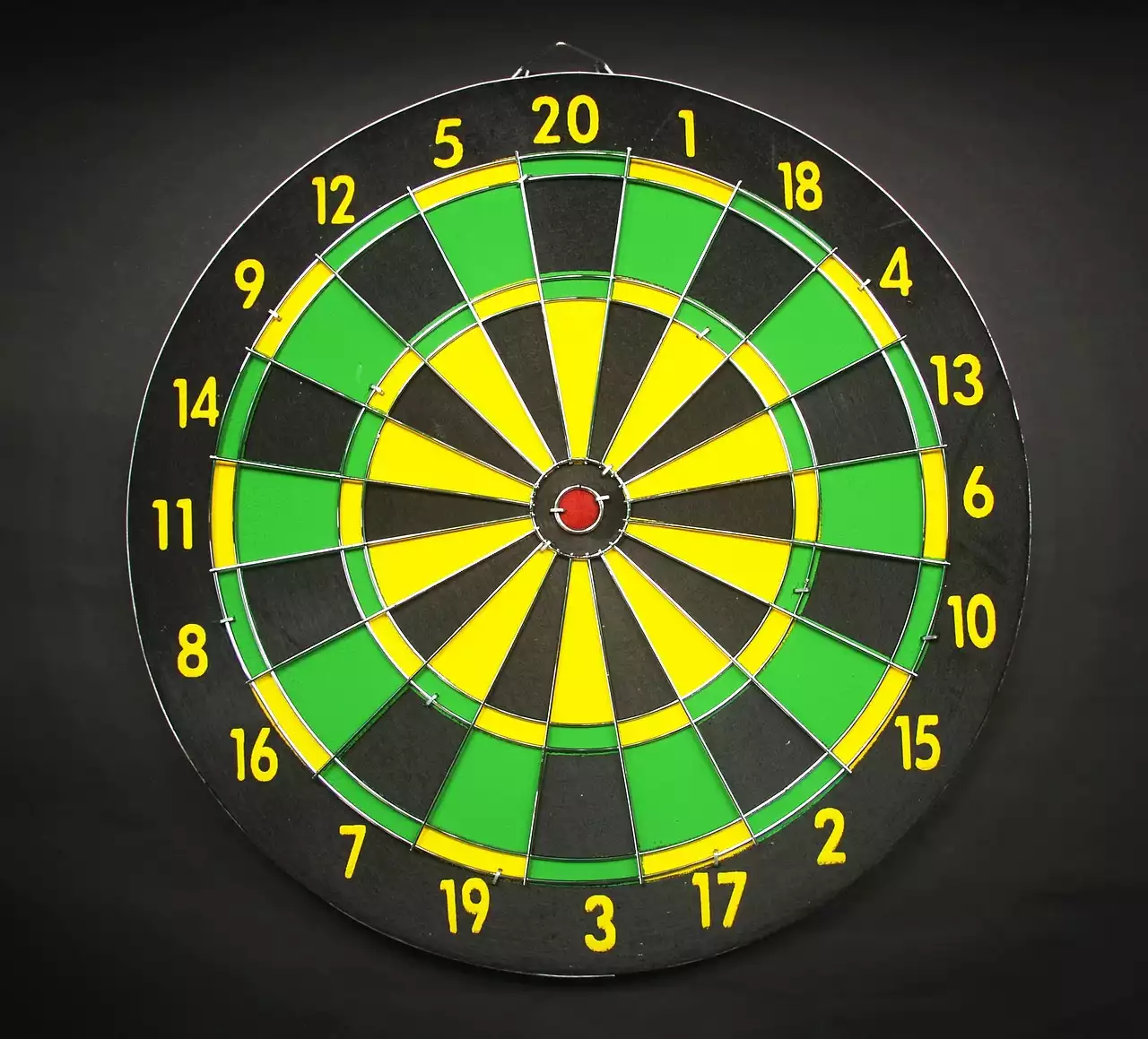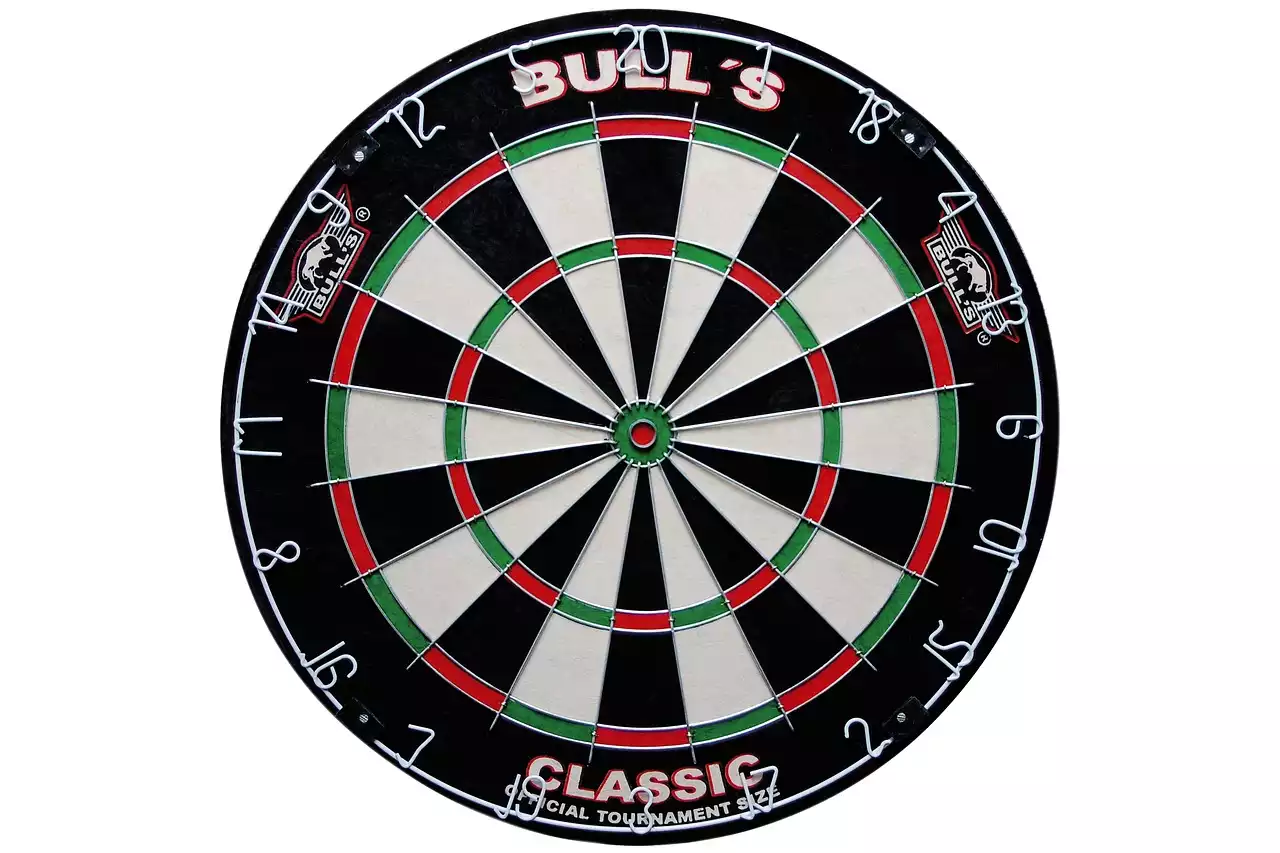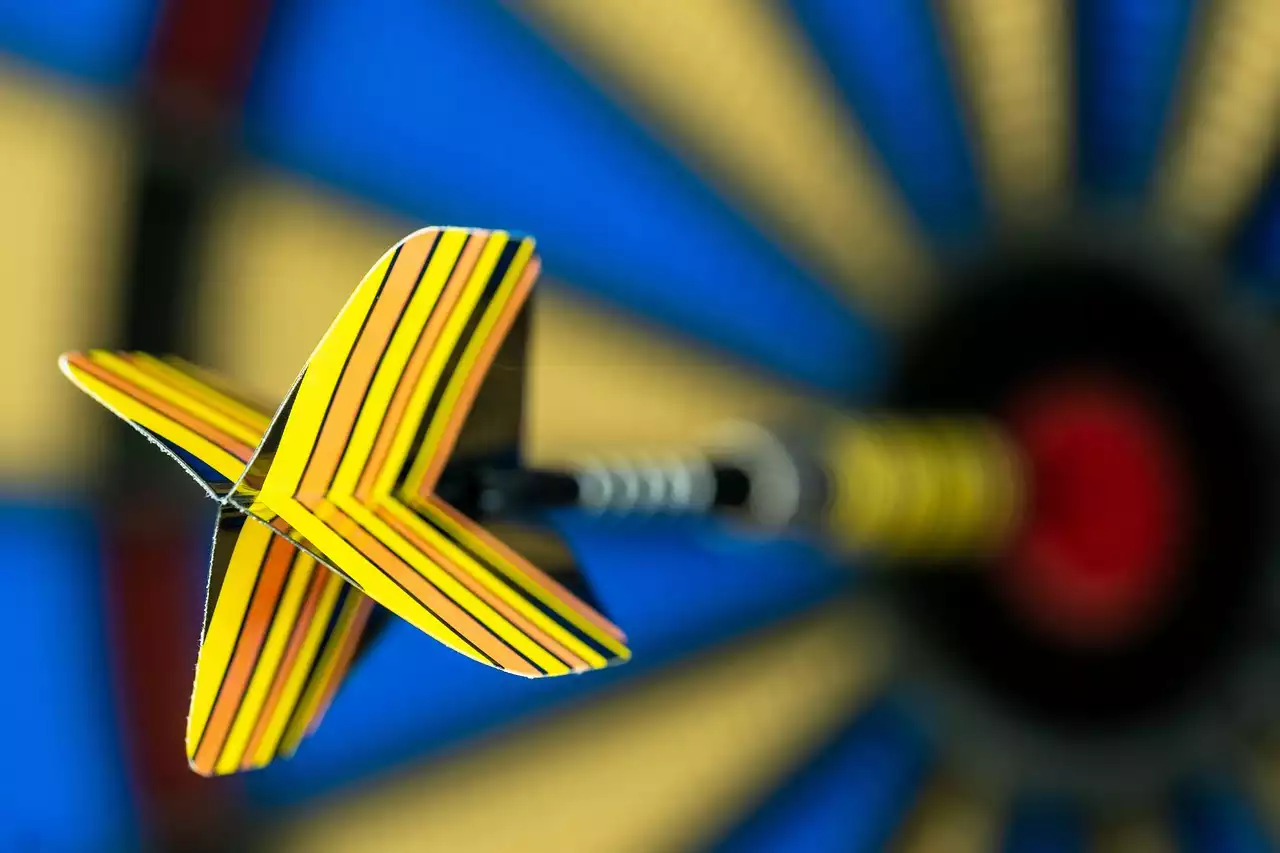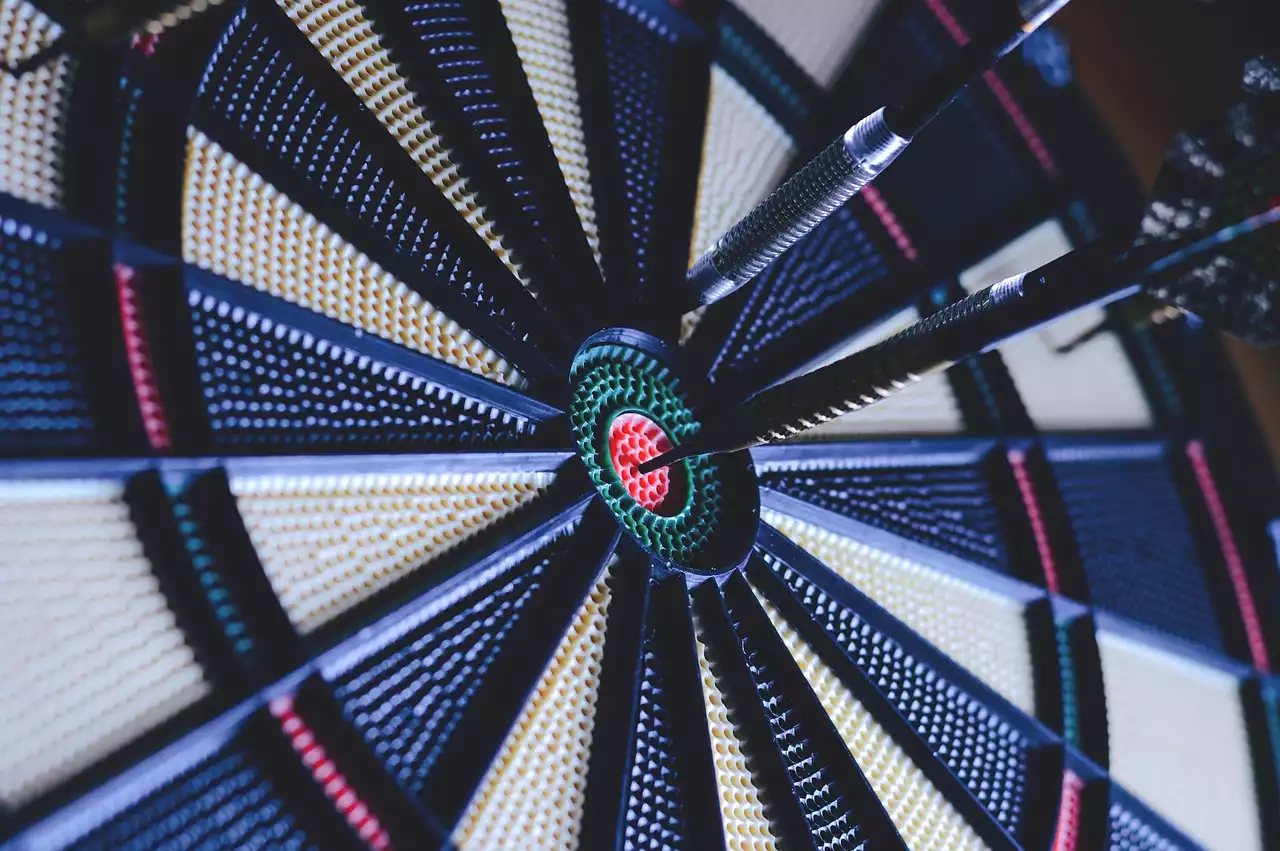Importance of Precision Scoring in Darts
Darts is a game of precision and accuracy. While throwing darts might seem like a simple task, scoring points consistently requires a combination of skill, technique, and focus. Precision scoring is crucial in darts, as it can make the difference between winning and losing a game. When you consistently hit the right targets, you not only increase your chances of winning, but you also gain confidence and improve your overall gameplay. In this section, we will explore why precision scoring is important in darts and how it can elevate your performance.
First and foremost, precision scoring allows you to maximize the points you score with each throw. Every dart that hits the intended target contributes to your score, while misses result in lost opportunities. By mastering precision scoring, you can ensure that your darts consistently land in high-scoring areas, such as the triple 20 or double 16. This strategic approach can give you a significant advantage over your opponents and increase your chances of winning matches.
Moreover, precision scoring helps you develop a consistent rhythm and flow in your gameplay. When you are able to hit the target consistently, your throws become more fluid and effortless. This not only improves your overall technique but also enhances your ability to adapt to different game situations. Whether you're playing in a casual setting or competing in a professional tournament, precision scoring allows you to maintain control and composure, even under pressure.
Additionally, precision scoring enhances the psychological aspect of the game. When you consistently hit your targets, you build confidence and create a positive feedback loop. This can have a significant impact on your mindset, as it boosts your self-belief and reduces anxiety. By mastering precision scoring, you can overcome nerves and perform at your best, even in high-stakes situations. The mental strength gained from precision scoring can be a game-changer and give you a competitive edge over your opponents.
In summary, precision scoring is essential in darts for several reasons. It allows you to maximize your points, develop a consistent rhythm, and enhance the psychological aspect of the game. By focusing on precision scoring, you can elevate your performance and achieve higher levels of success in darts.
Techniques for Improving Accuracy in Scoring
Improving accuracy in scoring is the foundation of precision scoring in darts. When your darts consistently hit the intended targets, you increase your chances of scoring high and winning matches. In this section, we will explore some techniques that can help you improve your accuracy and become a more precise scorer.
One of the key techniques for improving accuracy in scoring is to focus on your aim. Before you throw your dart, take a moment to visualize the target and align your body and arm accordingly. Your eyes should be fixed on the specific area you want to hit, whether it's the triple 20 or any other high-scoring segment. By maintaining a clear and focused aim, you can increase the accuracy of your throws and consistently hit your intended targets.
Another technique that can help improve your accuracy is to perfect your follow-through. After releasing the dart, it's important to maintain a smooth and controlled motion until the dart reaches the target. Avoid any jerky or abrupt movements that can disrupt the trajectory of the dart. Instead, focus on a fluid and consistent follow-through, allowing the dart to glide towards the target with precision. This technique not only improves accuracy but also enhances your overall throwing technique.
In addition to aim and follow-through, grip plays a crucial role in improving accuracy. Experiment with different grips to find the one that feels most comfortable and natural for you. A good grip allows you to have better control over the dart and reduces the chances of it slipping or wobbling during the release. Practice your grip consistently to develop muscle memory and improve your accuracy over time.
Furthermore, practicing regularly is vital for improving accuracy in scoring. Dedicate time to honing your skills and focus specifically on precision scoring. Set up practice routines that simulate real-game scenarios, such as aiming for specific targets or playing games with friends. By consistently practicing precision scoring, you can refine your technique, build muscle memory, and improve your overall accuracy.
To summarize, improving accuracy in scoring requires focusing on aim, perfecting the follow-through, finding the right grip, and practicing regularly. By incorporating these techniques into your training routine, you can significantly enhance your accuracy and become a more precise scorer in darts.
Understanding the Scoring System in Darts
To master the art of precision scoring in darts, it's essential to have a thorough understanding of the scoring system. Darts is a game that revolves around numbers and targets, and knowing how points are awarded can greatly enhance your gameplay. In this section, we will explore the scoring system in darts and provide you with the knowledge you need to maximize your scoring potential.
The standard scoring system in darts is based on a 501-point format. Each player starts with a score of 501 and aims to reach zero by subtracting the points they score with each throw. The objective is to finish the game with the fewest number of darts possible. The scoring segments on the dartboard are divided into different point values, ranging from 1 to 60.
The outer ring of the dartboard, also known as the single ring, represents the lowest point values. The inner ring, known as the double ring, awards double the points of the corresponding segment. The smallest segment on the dartboard, known as the triple ring, awards triple the points. The bullseye at the center of the board has two sections: the outer bullseye, which awards 25 points, and the inner bullseye, or bullseye, which awards 50 points.
To score effectively in darts, it's crucial to understand the value of each segment and strategically aim for high-scoring areas. The triple 20, located at the top of the board, is considered the highest-scoring segment and is often targeted by skilled players. A single dart in the triple 20 awards 60 points, making it a valuable area to aim for. Other high-scoring segments include the triple 19 and triple 18, which award 57 and 54 points respectively.
In addition to aiming for high-scoring segments, players can also strategically utilize the double segments to score effectively. For example, if a player has a score of 40 remaining, they can aim for a double 20 to finish the game with a single dart. Similarly, aiming for a double 16 when the remaining score is 32 can result in a game-winning finish. Understanding these strategic possibilities can give you a significant advantage in darts and improve your scoring efficiency.
In summary, understanding the scoring system in darts is crucial for precision scoring. Familiarize yourself with the different point values of each segment, aim for high-scoring areas such as the triple 20, and strategically utilize double segments to maximize your scoring potential. By mastering the scoring system, you can become a more precise scorer and increase your chances of winning matches.
Mastering the Art of Hitting the Target Consistently
Hitting the target consistently is the ultimate goal in precision scoring in darts. When your darts consistently land in the desired segments, you increase your chances of scoring high and winning matches. In this section, we will explore techniques and tips to help you master the art of hitting the target consistently and become a more precise scorer.
First and foremost, maintaining a consistent throwing technique is key to hitting the target consistently. Develop a throwing motion that feels comfortable and natural for you, and practice it consistently to build muscle memory. Your throw should be smooth and controlled, with a fluid follow-through. Avoid any unnecessary movements or jerks that can affect the trajectory of the dart. By mastering a consistent throwing technique, you can improve your accuracy and hit the target consistently.
Another technique that can help you hit the target consistently is to focus on your stance and body alignment. Stand with your dominant foot slightly forward and your body facing the dartboard. This allows for better balance and stability during the throw. Align your body and arm with the target, ensuring that your eyes are fixed on the specific segment you want to hit. By maintaining a focused stance and alignment, you increase your chances of hitting the target consistently.
Furthermore, visualization plays a crucial role in hitting the target consistently. Before each throw, visualize the dart landing in the desired segment. Imagine the dart following the intended trajectory and hitting the target with precision. This mental imagery helps to program your mind and improve your focus. By visualizing success, you create a positive mindset that increases the likelihood of hitting the target consistently.
Additionally, practicing precision scoring drills can significantly improve your ability to hit the target consistently. Set up specific targets on the dartboard and aim for them repeatedly. Start with larger targets and gradually decrease their size as you improve. This drill not only hones your aim but also improves your accuracy and consistency. Consistent practice of precision scoring drills will help you develop muscle memory and improve your ability to hit the target consistently in real-game situations.
To summarize, mastering the art of hitting the target consistently requires developing a consistent throwing technique, focusing on stance and alignment, visualizing success, and practicing precision scoring drills. By incorporating these techniques into your training routine, you can significantly improve your accuracy and become a more precise scorer in darts.










